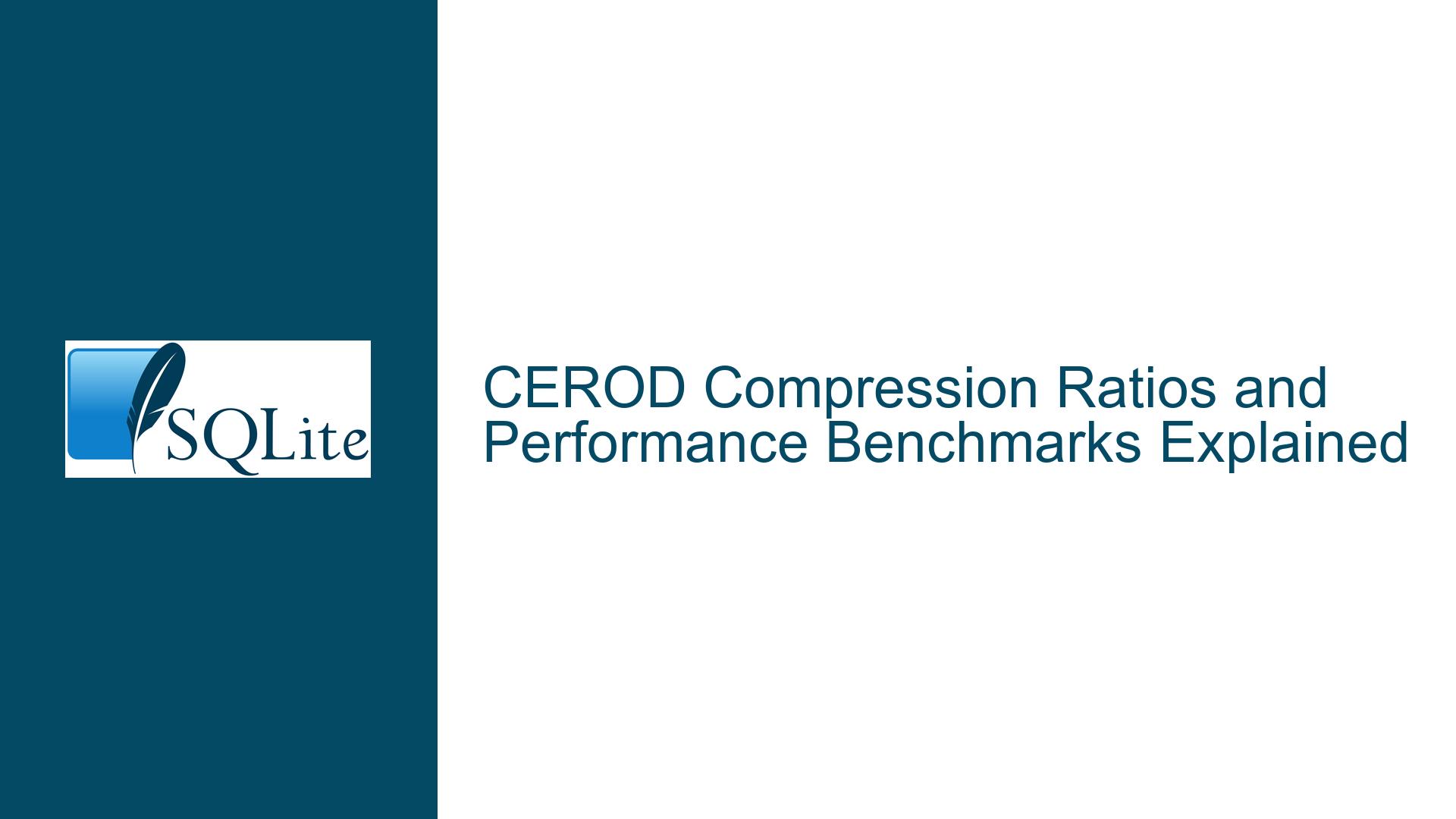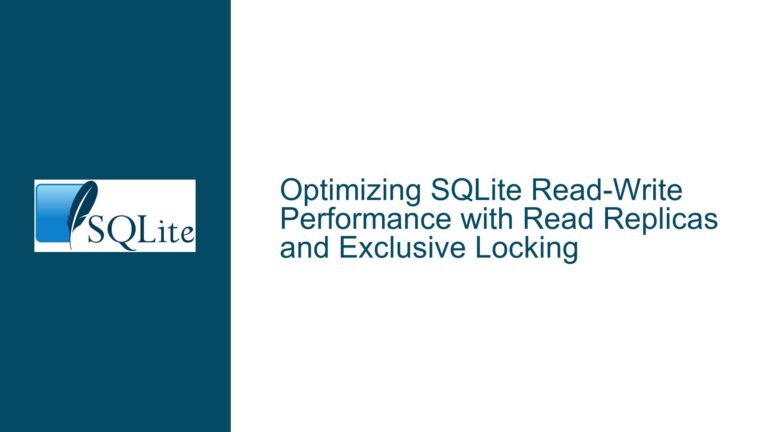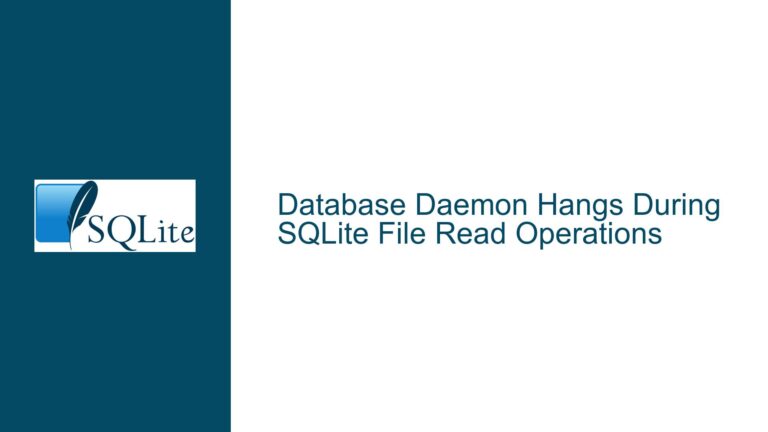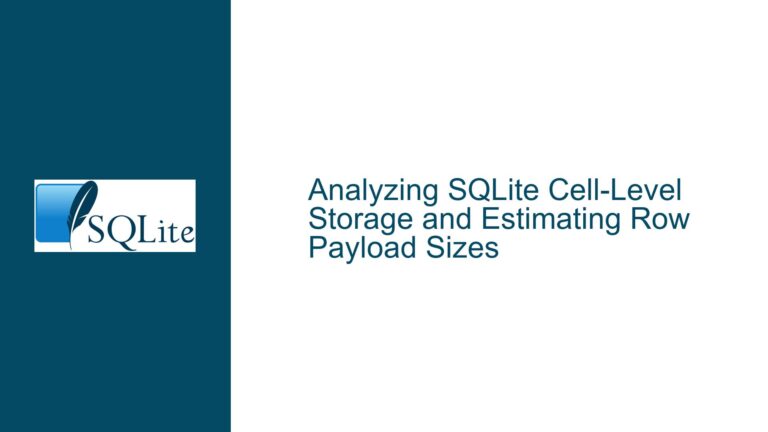CEROD Compression Ratios and Performance Benchmarks Explained
CEROD Compression Consistency and Performance Variability
The CEROD extension for SQLite provides on-the-fly compression for database files, aiming to reduce storage footprint while maintaining operational efficiency. A common inquiry revolves around two metrics: compression ratios (how much smaller the database becomes) and performance penalties (the computational overhead introduced by compression). These metrics are interdependent but influenced by distinct factors.
CEROD’s compression ratio is deterministic for a given dataset because it employs a fixed block-based algorithm. This means that identical data patterns will compress to the same size across different systems, assuming the same CEROD configuration. For example, a database containing repetitive text entries or structured log data might achieve a 2.5x reduction in size. However, the ratio is not universally fixed; it depends on the entropy of the data. High-entropy data (e.g., encrypted blobs, random numbers) will compress poorly, while low-entropy data (e.g., natural language text, JSON/XML with repeated keys) will see significant gains.
Performance penalties are less predictable. Compression and decompression require CPU cycles, but the impact on overall database operations depends on the workload type. Read-heavy applications (e.g., analytics queries) primarily suffer from decompression overhead, whereas write-heavy workloads (e.g., logging systems) incur costs during compression. The interaction between CEROD and SQLite’s page cache further complicates this: frequently accessed pages might reside decompressed in memory, mitigating disk I/O but increasing memory usage.
The variability in performance benchmarks stems from hardware heterogeneity. For instance, a system with a multi-core CPU and NVMe storage might handle CEROD’s compression with minimal latency, while a single-core machine with a mechanical hard disk could experience significant slowdowns. Virtualized environments add another layer of complexity due to resource contention and hypervisor overhead, which can distort measurements.
Factors Influencing CEROD Compression Efficiency and Speed Penalties
Data Patterns and Schema Design
The structure of the database schema and the nature of the stored data dictate compression efficiency. Tables with columns storing highly compressible data types (e.g., TEXT, JSON) will benefit more from CEROD than those with incompressible types (e.g., BLOB containing encrypted data). Additionally, row-oriented storage in SQLite can lead to repeated field names or values within a page, enhancing compression ratios. For example, a table with a log_message column that frequently contains the string "ERROR: Connection timeout" will compress well.
Hardware and System Configuration
CPU architecture plays a critical role in compression speed. Modern processors with SIMD instructions (e.g., AVX-512) accelerate compression algorithms, reducing the per-page processing time. Systems with ample RAM can cache decompressed pages, reducing the frequency of compression/decompression cycles. Conversely, storage subsystems with high latency (e.g., network-attached storage) exacerbate performance penalties, as CEROD must wait for compressed data to be read or written before proceeding.
Workload Characteristics
Transactional workloads with small, frequent writes (e.g., IoT sensor data ingestion) may experience higher overhead due to the need to compress each modified page before writing it to disk. Analytical queries scanning large ranges of data might face delays from bulk decompression. The use of features like PRAGMA synchronous=FULL or WAL (Write-Ahead Logging) introduces additional I/O operations that interact with CEROD’s compression pipeline.
Virtualization and Resource Contention
In cloud or virtualized environments, CEROD’s performance is influenced by hypervisor scheduling and shared physical resources. A virtual machine with vCPoversubscribed cores might struggle with compression threads competing for CPU time. Similarly, shared storage backends (e.g., AWS EBS) can introduce unpredictable I/O latency, making benchmark results less reproducible.
Evaluating and Optimizing CEROD for Specific Use Cases
Step 1: Baseline Measurement
Before deploying CEROD, establish baseline metrics for both uncompressed and compressed databases. Use a representative dataset that mirrors production data in terms of size and entropy. For example, create a sample database with 10,000 rows containing a mix of text, numerical data, and blobs. Measure:
- Compression Ratio: Compare the file sizes of the uncompressed (
*.db) and CEROD-compressed (*.dbcerod) databases. - Read Performance: Execute a
SELECTquery that scans 50% of the database pages and record the execution time. - Write Performance: Time an
INSERToperation that adds 1,000 rows, including transaction commits.
Step 2: Hardware-Specific Tuning
Adjust SQLite and CEROD parameters to align with hardware capabilities. For instance:
- Increase the
cache_sizepragma to leverage available RAM for caching decompressed pages. - Experiment with different page sizes (
PRAGMA page_size) to match the compression block size, reducing fragmentation. - On systems with fast CPUs but slow storage, prioritize compression levels that minimize I/O (higher compression) despite increased CPU usage.
Step 3: Workload Profiling
Identify whether the application is read-heavy, write-heavy, or mixed. For read-heavy scenarios:
- Prefer decompression-friendly algorithms (if CEROD allows algorithm selection).
- Use
mmapto map the compressed database into memory, allowing the OS to manage page caching.
For write-heavy scenarios: - Batch writes into larger transactions to amortize compression overhead.
- Consider disabling synchronous writes (
PRAGMA synchronous=OFF) in scenarios where data loss is acceptable.
Step 4: Comparative Analysis with Alternatives
Compare CEROD against other compression solutions like Zstandard (zstd) or Brotli. For example:
- Zstandard offers tunable compression levels and dictionary-based compression, which might outperform CEROD for specific data types.
- Test hybrid approaches, such as compressing individual BLOB columns using application-level zstd before storage, reducing reliance on database-level compression.
Step 5: Long-Term Monitoring
Deploy CEROD in a staging environment with monitoring tools to track:
- Memory Usage: Ensure decompressed pages do not exhaust available RAM, leading to swap thrashing.
- I/O Patterns: Use tools like
iotopordstatto identify whether storage latency becomes a bottleneck. - CPU Utilization: Profile the system during peak loads to detect CPU saturation from compression threads.
Final Considerations
CEROD is ideal for environments where storage costs outweigh computational resources, such as embedded systems with limited flash storage or cloud databases where reduced storage fees justify higher CPU costs. However, for applications requiring real-time responsiveness or operating on low-power hardware, the performance penalties might necessitate alternative strategies, such as offline compression or selective column-level encoding. Always validate benchmarks against actual use-case conditions rather than relying on generic figures.






